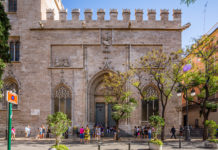Our Planet’s Landmarks Series #33
The Catacombs Paris France
Not so long ago, Paris was in the news for the Paris Climate Agreement Donald Trump walked out of. This agreement revolved around curbing the global greenhouse gas emission.
That wasn’t the first time Paris had been in the eye of an environmental storm. In 18th-century Paris, two unrelated phenomena had brought environmental issues to the fore. One was a 1774 major cave-in of Rue Denfert-Rochereau that swallowed up 300 metres. The other was the 1780 closure of the Saints-Innocents cemetery.

The cave-in had Louis XVI sign a decree. It prohibited extraction of material from under public roads. The closure of the cemetery led to the consecration of the Tombe-Issoire quarries in 1786. These went on to become the oddest filing cabinets in the world. Not any dusty old shelf in a period library building. But the municipal ossuary, known as The Catacombs!
The next quarter of a century went in the transfer of the bones. From the church cemeteries of Paris to the Catacombs. In 1809, the Catacombs became open to the public.

Walking through the Catacombs
Despite reaching early, we found a snaking queue. It went around a mound-shaped roundabout. This mound housed the entrance lobby building. The view around the roundabout was a buzzing neighbourhood. It did not betray what lay beneath.

We had an entry time slot-locked ticket. When it was time, the top of the queue took us to a different world 20 metres beneath.
We learnt the Catacombs covered a gigantic 11,000 sq mt area. Our hour-long walk was going to be 1.5 km. And we’d be climbing down 131 steps and climbing up another 112.

Insides of the Catacombs felt like a wine cellar. Cool, damp, and dark. Knowing what lay ahead made it eerie too. A short walk later we saw the first stack. Of human bones.
Eerie Walkways
While we expected piles of bones, what we saw was not anticipated. A neat assemblage of tibiae and skulls lined the passage. We learnt a pile of the other bones or pieces lay behind those bone-walls. A quarry backfill arrangement helped organise the loose pile of bones. Inspector Héricart de Thury oversaw extensive redecoration. The public opening of the ossuary in 1809 followed.

The aisle went past some masonry monuments. In the shape of altars, tombs, and Doric columns. Different areas derived their names from religious and other antique sources. Lachrymatory Sarcophagus, the Samaritan Fountain, the Sepulchral Lamp, to name a few.

Skulls arrayed as a heart, a neat straight line, and more broke the monotony of walls of tibiae. The crossroads had barrel-shaped pillars of bone piles. The impact was surreal!
The Catacombs – Our Planet’s Landmark
Underground burials are quite a norm across different civilisations. Muslim countries do it. Ancient Egyptians did that. Rome has over 60 catacombs extending to hundreds of kilometers underground. With thousands of tombs from 5th to 2nd century BCE.

In fact, Rome’s catacombs gave Paris underground ossuary the name ‘Catacombs’.
But it is seldom that bones needed arrangement to address the issue of cemetery overflow. I have visited only two such locations where that happened. The Catacombs, Paris, and Sedlec Ossuary or the Bone Church, Kutna Hora. To my mind, both are our planet’s landmarks. Do you agree? Leave a comment.





















